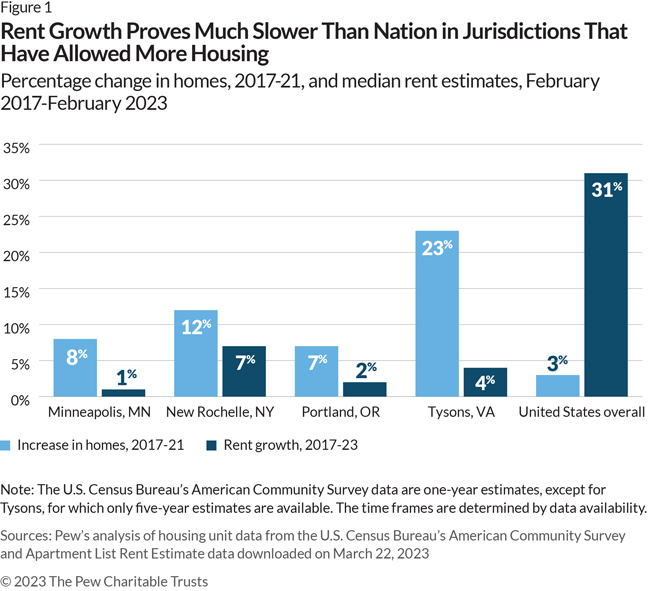More Flexible Zoning Helps Contain Rising Rents
New data from 4 jurisdictions that are allowing more housing shows sharply slowed rent growth
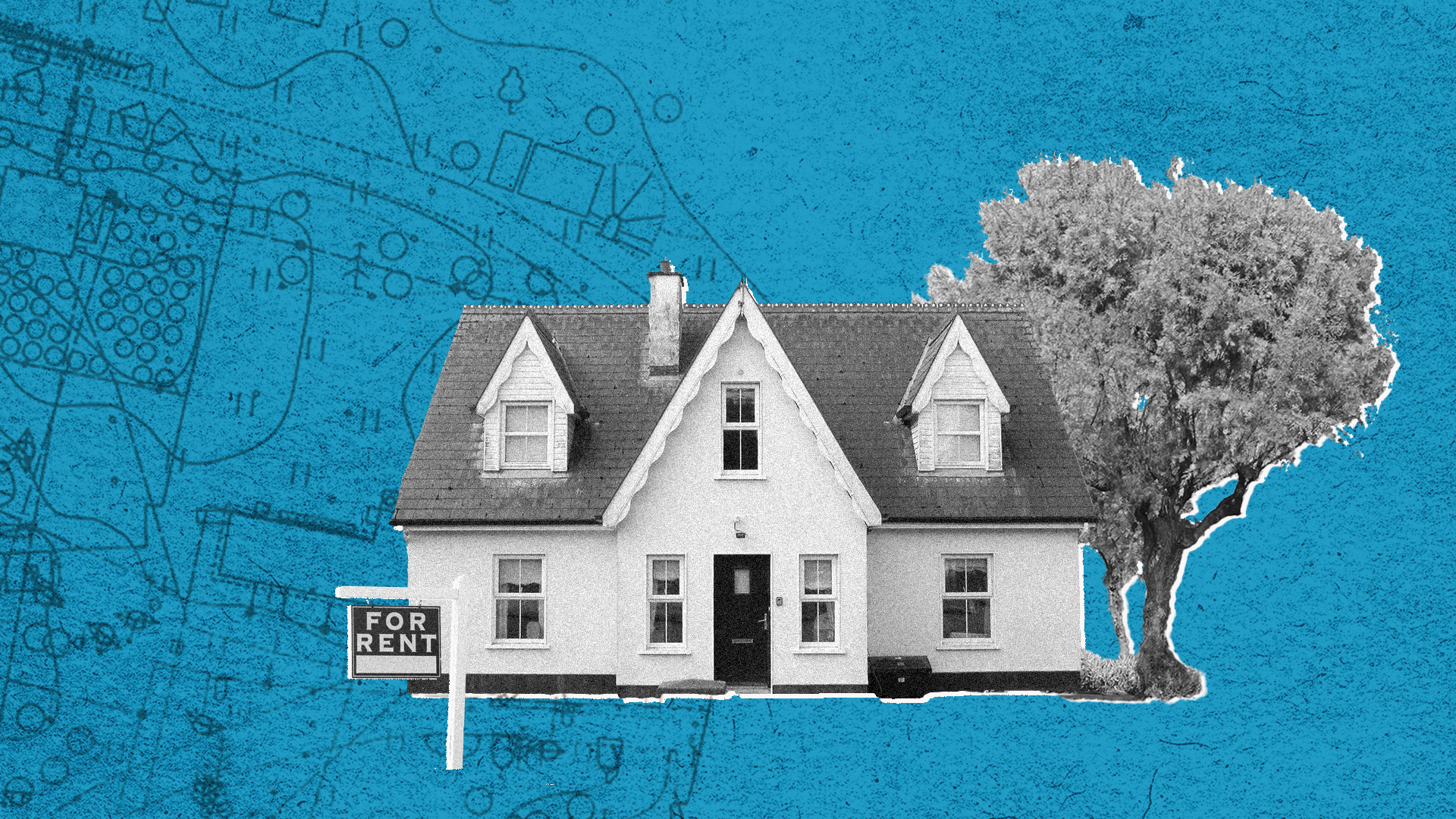
A national housing shortage has driven up rents, leaving a record share of Americans spending more than 30% of their income on rent and making them what is known as rent-burdened. But in four jurisdictions—Minneapolis; New Rochelle, New York; Portland, Oregon; and Tysons, Virginia—new zoning rules to allow more housing have helped curtail rent growth, saving tenants thousands of dollars annually.
Higher rents have helped push up inflation because housing costs make up one third of the inflation index. In recent years, more states, cities, and towns have reformed their zoning—that is, rules dictating what can be built where—and now allow far more housing than before. The Pew Charitable Trusts examined the changes in these four jurisdictions because they all have received attention for revising their formerly restrictive zoning codes and allowing more housing.
Research shows that rents rise when more people need housing relative to how many homes are available. Restrictive zoning policies make it harder and more expensive to build new housing for everyone who wants it, and most researchers have found that this drives up home prices and rents. Rents usually rise quickly when an area has rapid job growth, an influx of new residents, or a surge in households.
But what happens to rents after new homes are built? Studies show that adding new housing supply slows rent growth—both nearby and regionally—by reducing competition among tenants for each available home and thereby lowering displacement pressures. This finding from the four jurisdictions examined supports the argument that updating zoning to allow more housing can improve affordability.
In all four places studied, the vast majority of new housing has been market rate, meaning rents are based on factors such as demand and prevailing construction and operating costs. Most rental homes do not receive government subsidies, though when available, subsidies allow rents to be set lower for households that earn only a certain portion of the area median income. Policymakers have debated whether allowing more market-rate—meaning unsubsidized—housing improves overall affordability in a market. The evidence indicates that adding more housing of any kind helps slow rent growth. And the Pew analysis of these four places is consistent with that finding. (See Table 1.)
Table 1
Jurisdictions That Relaxed Zoning Are Keeping Rent Growth in Check
Percentage change in median rent estimates, February 2017-February 2023, by jurisdiction
| Location | Rent growth, 2017-23 |
|---|---|
| Minneapolis | 1% |
| New Rochelle, New York | 7% |
| Portland, Oregon | 2% |
| Tysons, Virginia | 4% |
| United States overall | 31% |
Note: Apartment List’s rent estimates represent monthly median contract rents that tenants pay when starting a new lease during a particular month for a vacant home in each market. The methodology adjusts for compositional changes in a market, such as when many new high-rent homes are built and listed for rent, focusing on repeated rental transactions for homes that have been rented more than once over time. Apartment List corrects for bias in its data relating to which property managers list vacant homes for rent on its website, providing estimates that are more representative of an entire rental market.
Source: Pew’s analysis of Apartment List Rent Estimate data downloaded on March 22, 2023
Each of these places kept rent growth minimal relative to the U.S. overall, even while demand for housing continued to grow. Between 2017 and 2021, the four jurisdictions saw their total number of households grow between 7% and 22%, while the total households nationally increased by 6%. More households require more homes, and a housing shortage relative to demand drives up rents.
So, how did these high-demand areas keep rents from spiking? The evidence indicates that more flexible zoning helped these places add new housing faster than new households formed or moved in to fill the homes. And that helped slow rent growth. (See Figure 1.) Towns and cities in the same metro areas that did not allow as much new housing generally saw faster rent growth. This trend matches the findings of prior research—that adding housing slows rent growth because there are more homes available. That means households are less likely to be chasing too few homes.
New Rochelle provides further evidence that the new housing stemming from the zoning changes caused the slowdown in rent growth. The housing boom in this Westchester County city did not begin until 2020, later than the other jurisdictions. New Rochelle permitted an average of 37 new homes per year in 2017 and 2018, but because it had rezoned a downtown area near its train station to allow apartments, the annual permit average jumped to 989 for 2019 to 2021. Rents in New Rochelle rose 12% from January 2017 to January 2020, and then declined 5% from January 2020 to February 2023 as new homes became available.
Although rents remain fairly high in the four places examined, they are certainly lower than they would be if the cities had not allowed more housing. And the fact that rents grew faster, often much faster, in nearby towns and cities, shows that no city can solve regional housing affordability on its own. To do that, states will likely need to act to ensure that restrictive local zoning does not make housing unaffordable.
In these jurisdictions, policymakers expressed a goal of improving affordability and enabled more housing as a mechanism for achieving it. They have succeeded in keeping rent growth low even while rents have soared in the U.S. overall and in nearby cities and towns. That has helped local tenants save thousands of dollars per year in rent relative to growing places that have placed greater restrictions on new housing.
Alex Horowitz is a director and Ryan Canavan is a senior associate with The Pew Charitable Trusts’ housing policy initiative.


Pathways to Homeownership: Housing in America
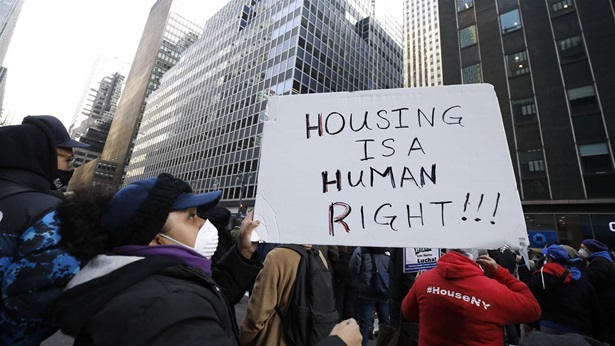
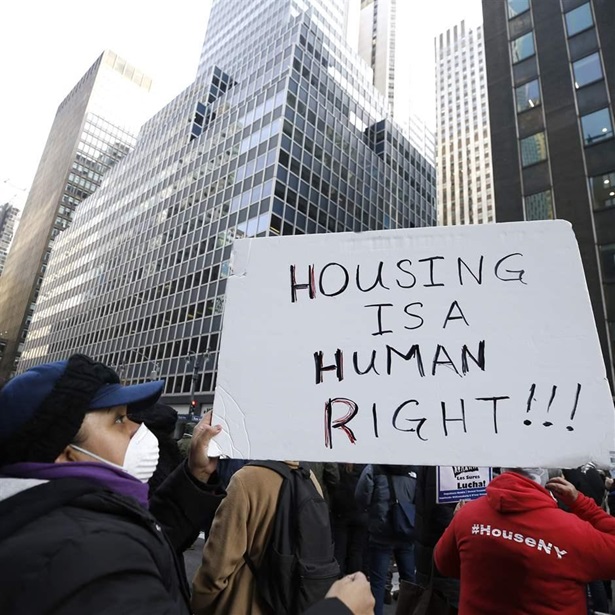
Homebuyers Using Alternative Financing Face Challenges
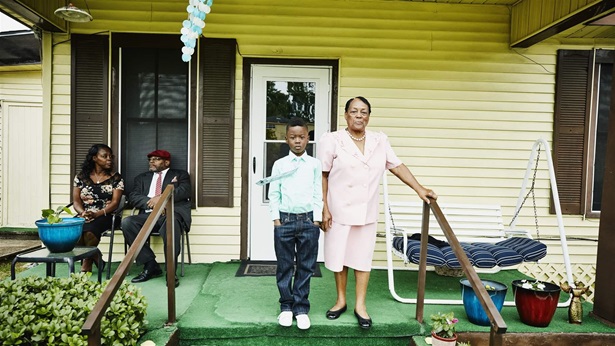
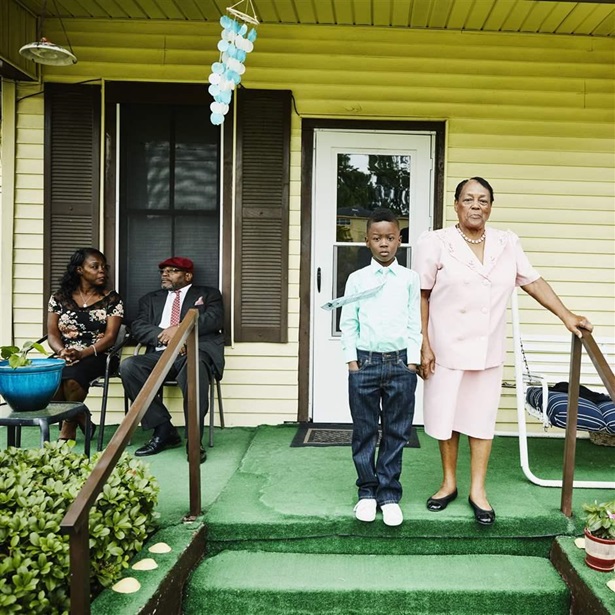
Alternative financing benefits can include short closing process


